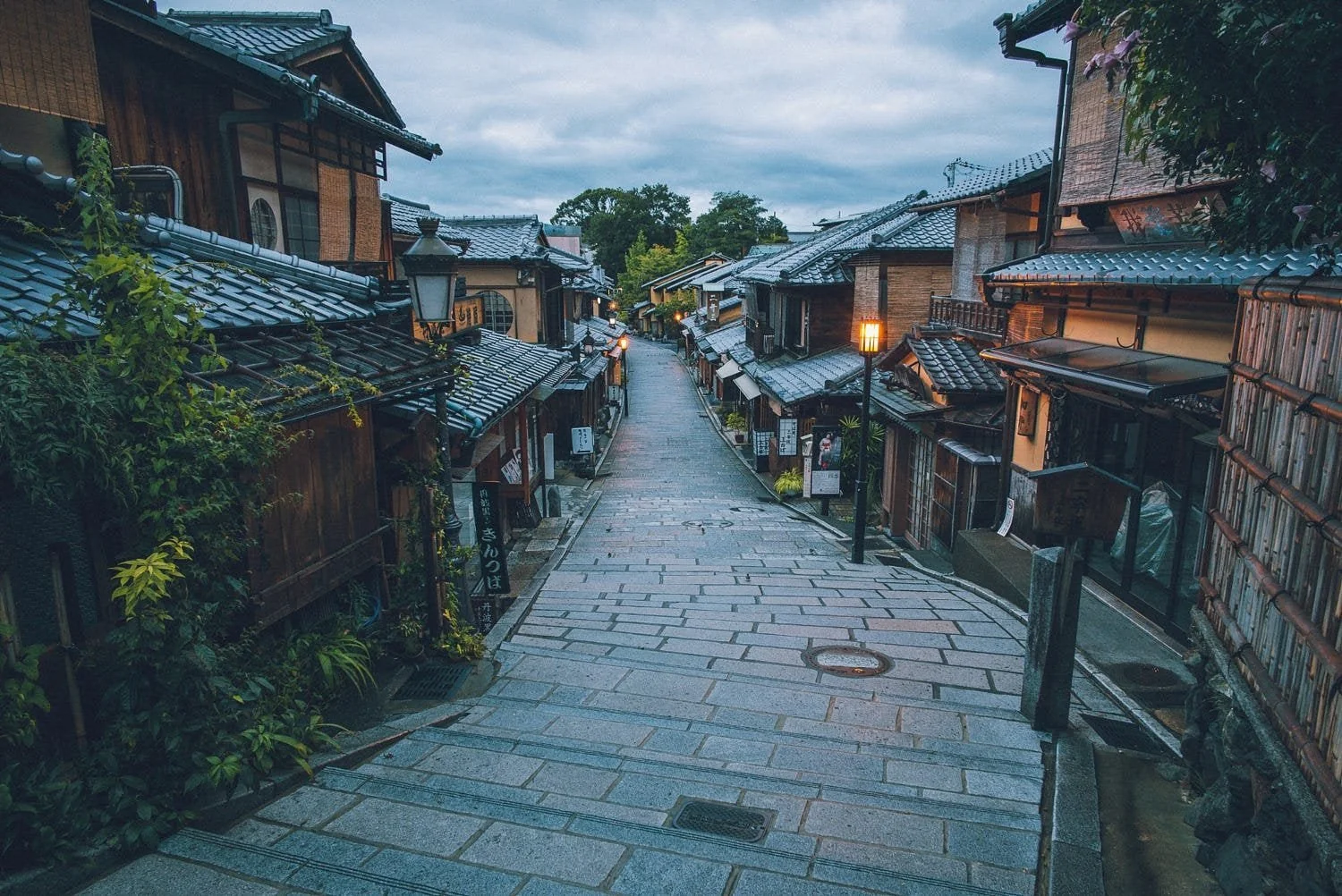Kyoto, steeped in history as Japan’s former capital, graces the island of Honshu with its timeless allure. Renowned for its myriad classical Buddhist temples, meticulously tended gardens, regal imperial palaces, revered Shinto shrines, and charming traditional wooden residences, Kyoto is a cultural treasure trove. Delve into its formal customs, including the exquisite kaiseki dining experience, featuring meticulously crafted dishes served in multiple courses, and encounter the enchanting world of geisha, elegant female entertainers synonymous with the atmospheric Gion district.
To reach Kyoto from Tokyo, you have several convenient options. If you prefer a more budget-friendly option, you can take the JR Tokaido or Sanyo Line from Tokyo Station to Kyoto Station. While this route takes longer than the Shinkansen, it can be more economical, especially if you have a Japan Rail Pass.
Shiga Prefecture, nestled among the offbeat destinations to explore in Japan, lies to the east of Kyoto on the island of Honshu. It is renowned for its centerpiece, the vast Lake Biwa, Japan’s largest freshwater lake. Along the scenic shores, travelers can discover the regional capital, Otsu, as well as the charming cities of Hikone, Sakamoto, and Nagahama. With its tranquil beaches and inviting holiday resorts, Shiga offers a serene escape from the bustling tourist trails. For adventurers seeking breathtaking views, a climb up Mount Ibuki, rising to 4,000 meters, promises unparalleled panoramas over the glistening waters of Lake Biwa.
To reach Shiga Prefecture from Tokyo, you can board the bullet train at Tokyo Station and ride it to Kyoto Station. The Shinkansen offers direct services to Kyoto Station, a major transportation hub in Shiga Prefecture. From Kyoto Station, you can easily transfer to local trains or buses to reach your specific destination within Shiga. Consider purchasing a Japan Rail Pass before your trip for unlimited travel on JR trains, including the Shinkansen, which can be a cost-effective option for exploring multiple regions of Japan.
Gifu Prefecture, located in central Honshu, Japan’s main island, boasts picturesque mountain villages such as Gujo Hachiman and the renowned skiing destination of Takayama. The prefectural capital, Gifu City, is celebrated for its traditional cormorant fishing, an ancient technique used to catch trout, while the Nagara River Ukai Museum in the city provides insight into this fascinating practice. Perched atop Mount Kinka, the reconstructed Gifu Castle offers breathtaking panoramic views of the surrounding landscape.
To reach Gifu Prefecture from Tokyo, the fastest way is by taking the Shinkansen (Bullet Train). Board the Shinkansen at Tokyo Station and ride it to Nagoya Station, a major transportation hub in Gifu Prefecture. From Nagoya Station, you can transfer to local trains or buses to reach your desired destination within Gifu.
Sendai, nestled in Japan’s Tohoku Region northeast of Tokyo on Honshu island, holds the remains of the 17th-century Sendai Castle, a testament to samurai lord Date Masamune’s legacy on Aoba Hill. Overlooking the city, it houses a museum showcasing historic artifacts. Meanwhile, the Sendai City Museum delves into Japan’s Edo period history and culture, with a focus on Masamune’s samurai armor.
To reach Sendai from Tokyo, you can take the Tohoku Shinkansen from Tokyo Station to Sendai Station. The Shinkansen offers frequent departures throughout the day, providing a comfortable journey with travel times averaging around 1.5 to 2.5 hours, depending on the type of train.
Nagano Prefecture, situated at the heart of Japan’s Honshu island, is renowned for its majestic mountains, rejuvenating hot springs, and captivating architecture. Its capital, Nagano, boasts the venerable Zenkō-ji temple, dating back to the 7th century, housing a revered “hidden Buddha” statue revealed to the public once every 6 or 7 years. The 16th-century Omine Castle now serves as a butterfly museum, while the Togakushi district showcases the ancient Togakushi Shrine and offers insights into ninja culture at the Togakushi Ninja Museum.
Nagano Prefecture is accessible from Tokyo by taking the Hokuriku Shinkansen from Tokyo Station to Nagano Station. This route offers direct services, making it a convenient option. The travel time is approximately 1.5 to 2.5 hours, depending on the type of train.
Izumo, located on Japan’s Honshu Island, is renowned for Izumo-taisha, an expansive Shinto shrine steeped in history dating back to the 8th century. The Shimane Museum of Ancient Izumo delves into the shrine’s rich past. Nearby, the Former Taisha Station, a 1920s rail terminal built in the Imperial Crown Style, stands as a testament to the area’s architectural heritage. Along the coast, the Hinomisaki Lighthouse offers breathtaking views of the sea, while Tachikue Gorge is home to numerous Buddhist statues.
To reach Izumo from Tokyo, you can take a domestic flight from Haneda Airport in Tokyo to Izumo Airport. Several airlines operate flights between Tokyo and Izumo, with a flight duration of approximately 1.5 to 2 hours. From Izumo Airport, you can take a bus or taxi to reach the city.
Yamagata, a city in northern Japan, boasts Kajo Park in its center, where the remnants of Yamagata Castle stand amidst spring cherry blossoms. Northeast of the city, Mount Hojusan’s long stairway leads to the Yamadera Temple complex, offering panoramic views from its Godaido observation deck. Nearby, the Yamadera Basho Museum pays tribute to the 17th-century poet Basho, who found inspiration in the area during his travels.
Yamagata can be reached from Tokyo by taking the Yamagata Shinkansen from Tokyo Station to Yamagata Station. The Yamagata Shinkansen offers direct services, making it a convenient option for travel. The journey takes approximately 2.5 to 3.5 hours, depending on the type of train.

